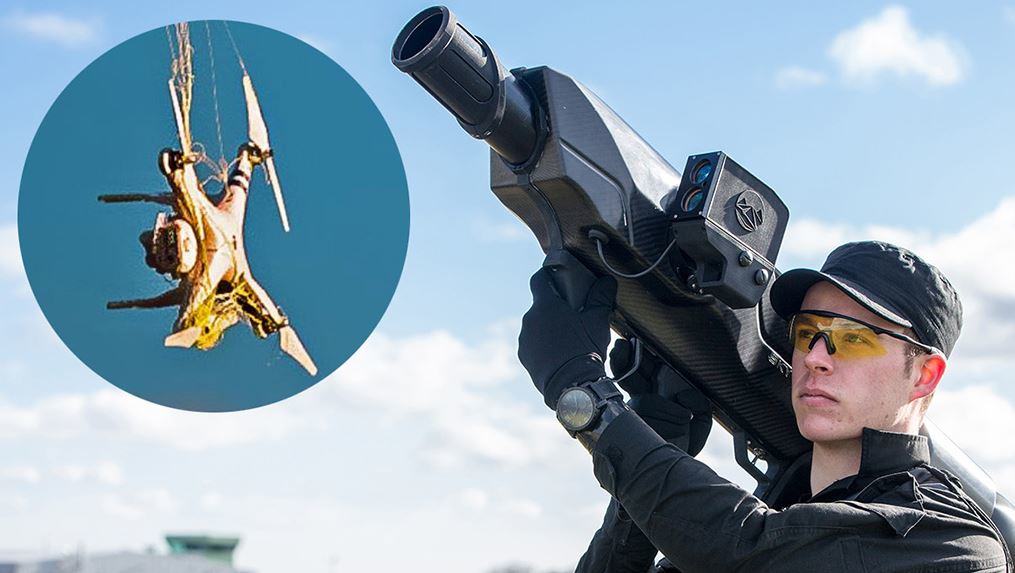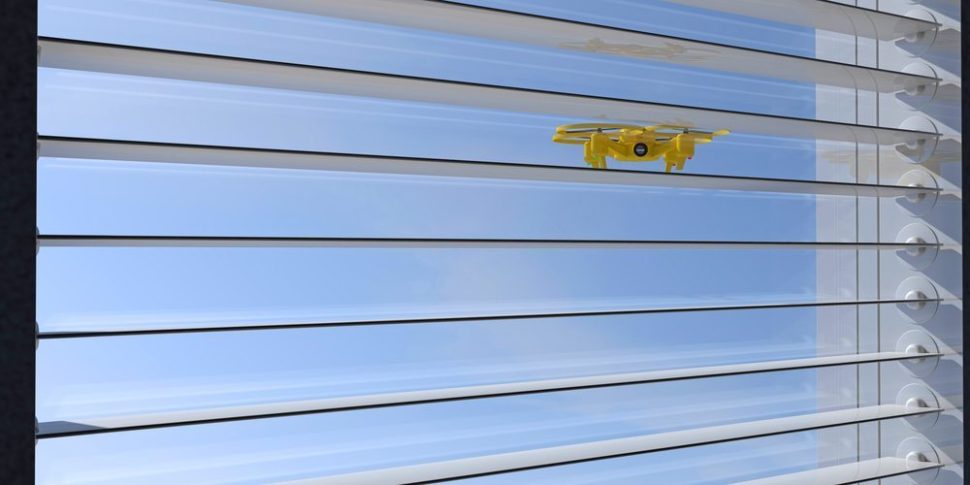Private sector anti-drone technology is on the rise. The nature of drones adds a new aspect of security that previously had not been a major concern. Drones threaten to upend several institutions unless they begin investing more in anti-drone capabilities.
The increasing popularity of commercial drones is opening doors for new anti-drone technology in the private sector.
Although the majority of commercial drones are used for business and personal hobbies, they pose a looming threat to public safety. Quadcopters are relatively inexpensive, and from a consumer perspective, beneficial to both business and recreational activities. With quadcopters, it is easy to explore local areas, take stunning aerial video and photography, gather data, deliver packages, and the list grows every quarter.

With the positive, however, comes the negative, and our flying friends are continuing to pose threats to public safety as their popularity increases. There is a serious lack of anti-drone infrastructure to combat looming threats, especially in stadium settings, around government buildings, and outside airplane traffic zones.
Not Just Fun And Games
Drones can be tasked with malicious intent whether using explosives, chemical weapons, or surveillance software. Aside from that, drones are often just in the way. They interrupt air traffic, and though they haven’t caused any fatalities yet, drones being sucked into jet engines would change everyone’s perception.

Though it is now illegal to fly drones over wildfires, firefighters have still had frustrating interactions with drones, which pose a danger to low-flying helicopters used by the fire service. Unmanaged drone activity in this situation could cause all aircraft to be grounded for safety. This is exactly what happened in a wildfire in the San Gabriel Mountains of Southern California last year.
Although the Federal Aviation Administration has restrictions for drone use in the U.S., and despite the various rules for no-drone zones, and even no-fly zones programmed into drone GPS systems, drones can and will continue to present unexpected security problems.
This is, arguably, the nature of drones. The FAA “receives more than 100 reports per month of drones flying near aircraft—more than triple the rate it was seeing in 2014.” As security firms deliberate over new challenges that drones present to public safety, it becomes clear that many tech firms are only at the beginning stages of figuring out how to tackles this problem.
As the presence of drones has moved from strictly government and military operations to the realm of public use, many companies are scrambling to update their security plans to combat specific attacks.
Anti-drone tech like Black Sage and Skywall grows as drone tech advances.Click To TweetIn response to learning that ISIS has been using drones to bomb and spy on people, the pentagon has asked for $20 million dollars in anti-drone research funding. Reports of drones being used to smuggle contraband into prisons have also sparked security concerns worldwide.
James Williams, an expert in aerial traffic law at Dentons law firm explains the depth of this new problem, saying “Every prison, every airport, every facility with sensitive equipment outdoors, stadiums, amusement parks, racetracks … everybody is now worried about drones.”
With drones as a concern, security firms have to add a new dimension to their roster of protective measures. No number of bomb-sniffing dogs or metal detectors can stop a drone from ruining an event or threatening the security of a given space.
Abiding by Old Laws
Because of the newness of the anti-drone business, there is not one specific solution in each context to counter drones just yet.
Some of this is because of various legal issues surrounding how to disarm aircraft. Others are rooted in the cat-and-mouse levels of secrecy around anti-drone technology. Budding security firms do not want potential threats to know exactly how they are able to counter the tech.
Wired recently published a fascinating piece by Robert Garrova about the anti-drone pursuits of counterintelligence start up Black Sage. The author goes behind the scenes with the firm and looks at their newest jamming technology which is effective, but illegal.
In 1934, the U.S. passed a law that makes it illegal to interrupt radio waves, and it applies now to drones and cellphones. Jammer technology uses lasers to paralyze the drone’s signal so that it then lands wherever it is. It is the interference with communications that makes the process illegal, and it is true that, if used in a major metropolitan area like New York city, it could cause confusion and interruption on a large and dangerous scale.
The makers of the technology acknowledge the risks, but also make it clear that sometimes the risks of having no signal for 30 seconds does not outweigh the concerns of a potential threat. Because of legal problems that they were always aware of, the team at Black Sage has successfully taken their anti-drone system abroad, where jamming laws are less strict.
Many argue that the anti-jamming law is possibly outdated, which Garrova also states in his article.
Despite the fact that the law was created almost 100 years ago, and technology has drastically advanced since then, the law might serve as a prescient reminder of the importance of privacy and autonomy when it comes to radio transmissions.
I would argue that communication needs more regulation–not less. We live in a world where anything that holds any importance is thrust into the Internet of Things. To that end, it might cause more harm than good if signals are being suddenly and indiscriminately interrupted.
Troubleshooting
So, what are we supposed to do?
Although many companies, including Black Sage, have the ability to detect and track drones, it is the disarmament of them that poses the biggest problem to security researchers.
If a drone is flying over your property, you could shoot it out of the sky like this man from Kentucky. The laws on this are also murky, however, and possibly outdated. It’s impossible to control where a drone would land if it were shot out of the sky, and that could cause more damage than was originally intended.
Of course, there are several military grade methods of drone detection and deactivation that are impressive, but not useful on a smaller, public scale.
One of the newer, more inventive solutions is SkyWall, a big old bazooka gun that shoots a net at the drone in mid-air to capture and safely parachute it to the ground. The gun comes in a range of models and is making waves in the anti-drone tech community, even though it is not the first to successfully use nets as anti-drone mechanisms.

The anti-drone business is still new. It needs more research and more investment before it inevitably becomes a booming security business.
In an interview about the time he spent with Black Sage, Garrova explains that we need anti-drone technology so that the rest of our security measures do not become obsolete. Based on the trend and popularity of drones for recreational and more malicious purposes, the battle between drones and the tech that is intended to stop them will only continue to escalate.
We’ll keep you posted on drone tech advancements and the anti-drone systems developed to counter these innovations. Anything we should keep an eye on?











Comments (0)
Most Recent